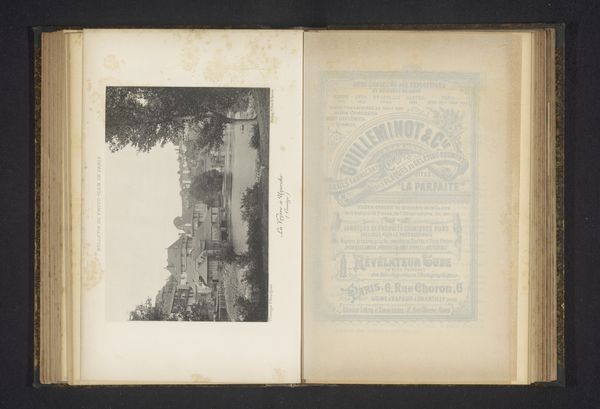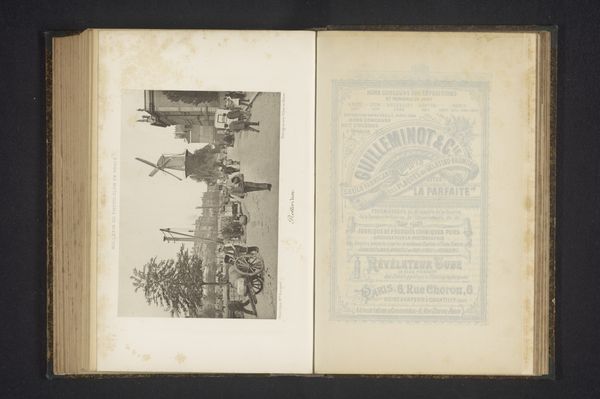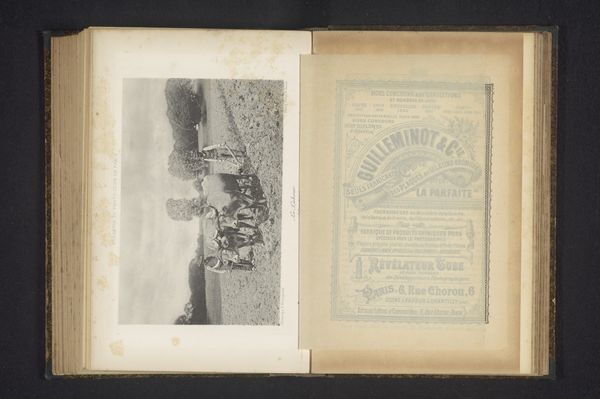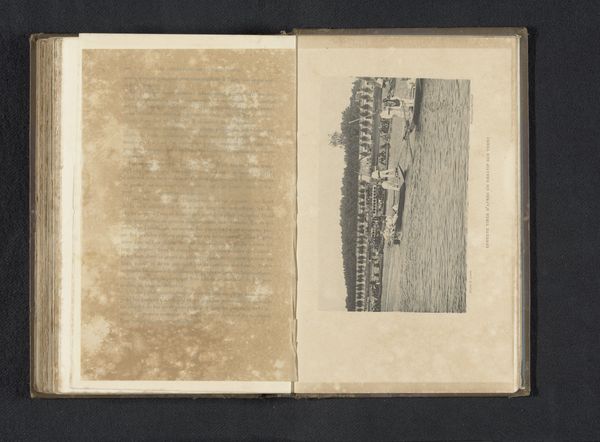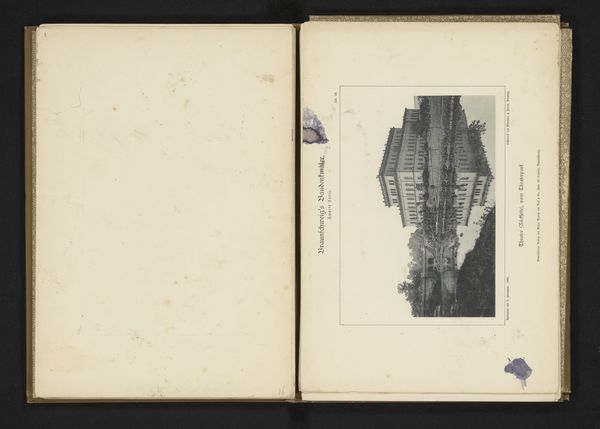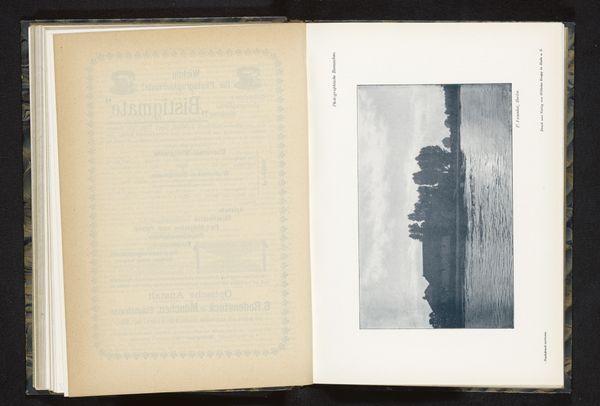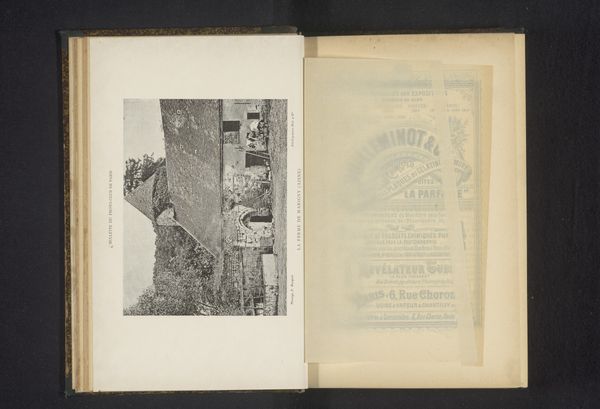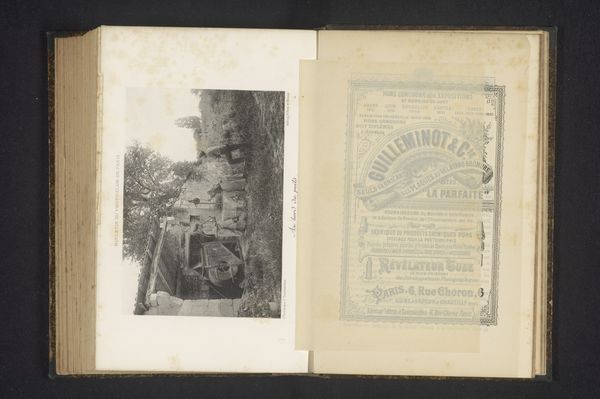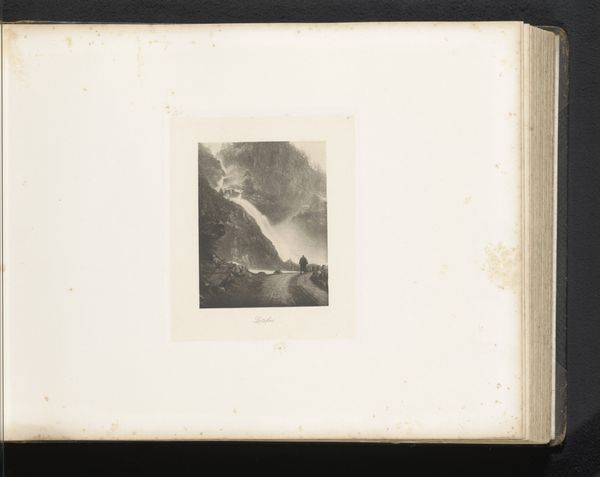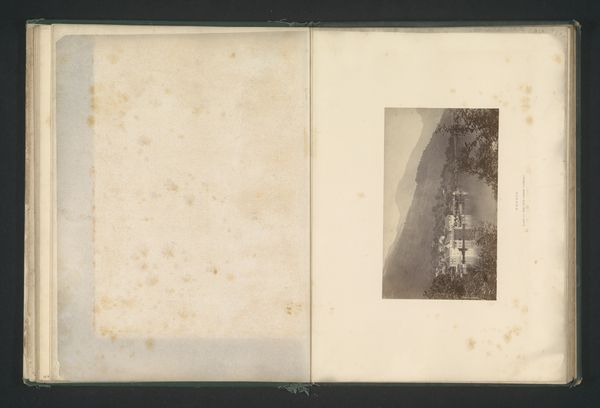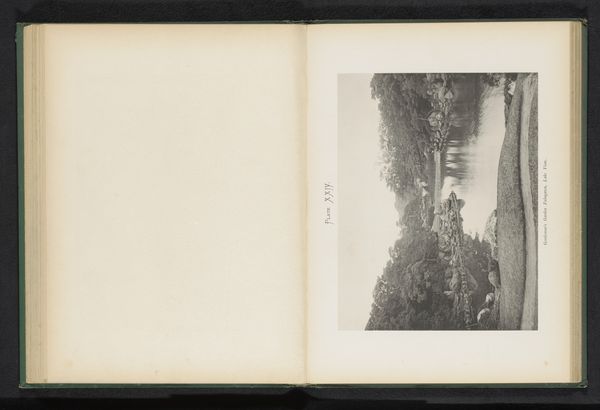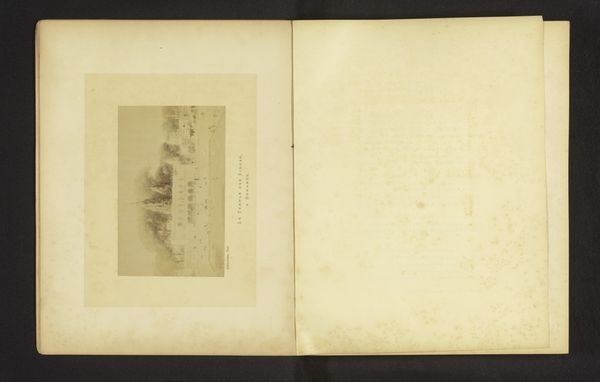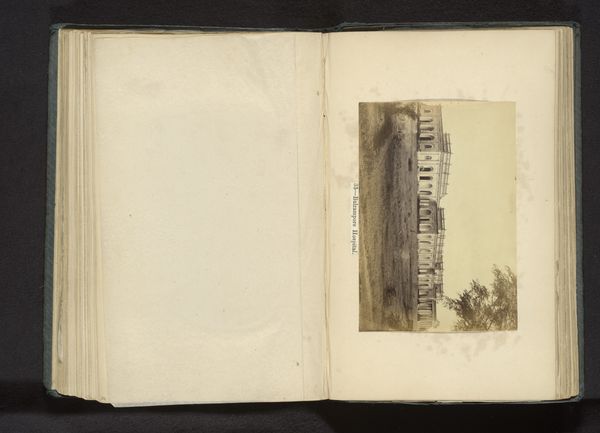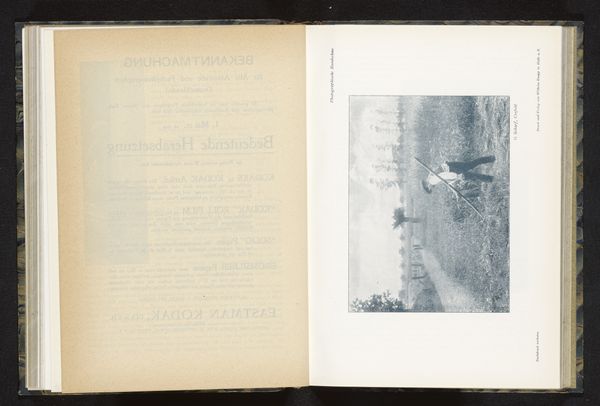
print, photography, albumen-print
# print
#
landscape
#
photography
#
coloured pencil
#
watercolor
#
albumen-print
Dimensions: height 120 mm, width 172 mm
Copyright: Rijks Museum: Open Domain
Editor: So, here we have "Sunset over a lake near Gérardmer, France," dating from before 1895, attributed to F. de Ribes-Christofle. It's an albumen print, so it's very striking, almost ghostly, in its tonal range. What strikes me most is its stillness; it feels very contemplative. What do you see in this piece? Curator: Beyond the quiet beauty, I see a document reflecting the evolving relationship between landscape, representation, and power. Photography in the late 19th century was becoming more accessible, yet landscape images were often carefully composed, reinforcing dominant cultural narratives. Consider who had the leisure and resources to commission or create such scenes, and what values—perhaps concerning land ownership or romanticized notions of nature—are embedded within. Does the stillness evoke a sense of peace for everyone, or might it also reflect a silencing of other voices and perspectives? Editor: That’s a really interesting point. I hadn’t considered the power dynamics inherent in landscape photography. It's so easy to just see it as beautiful. Curator: Exactly! And while it *is* beautiful, we have to remember to analyze who had access to that beauty, whose stories were being told, and whose were being left out of the frame, so to speak. Notice the framing within the image itself; how the composition guides your eye and emphasizes certain elements while obscuring others. Does this tell a story, and if so, who benefits? Editor: I see what you mean about the composition as a method of control, literally framing our view. Thinking about it in those terms definitely changes my perspective. It stops being a passive object. Curator: Precisely! Art becomes a space for critical engagement, where we question not just what we see, but also how and *why* we see it that way. Editor: That’s given me a lot to think about – I am excited to revisit other photographs using this lens. Curator: Indeed. Seeing art as part of larger societal frameworks allows us to reveal so much.
Comments
No comments
Be the first to comment and join the conversation on the ultimate creative platform.
